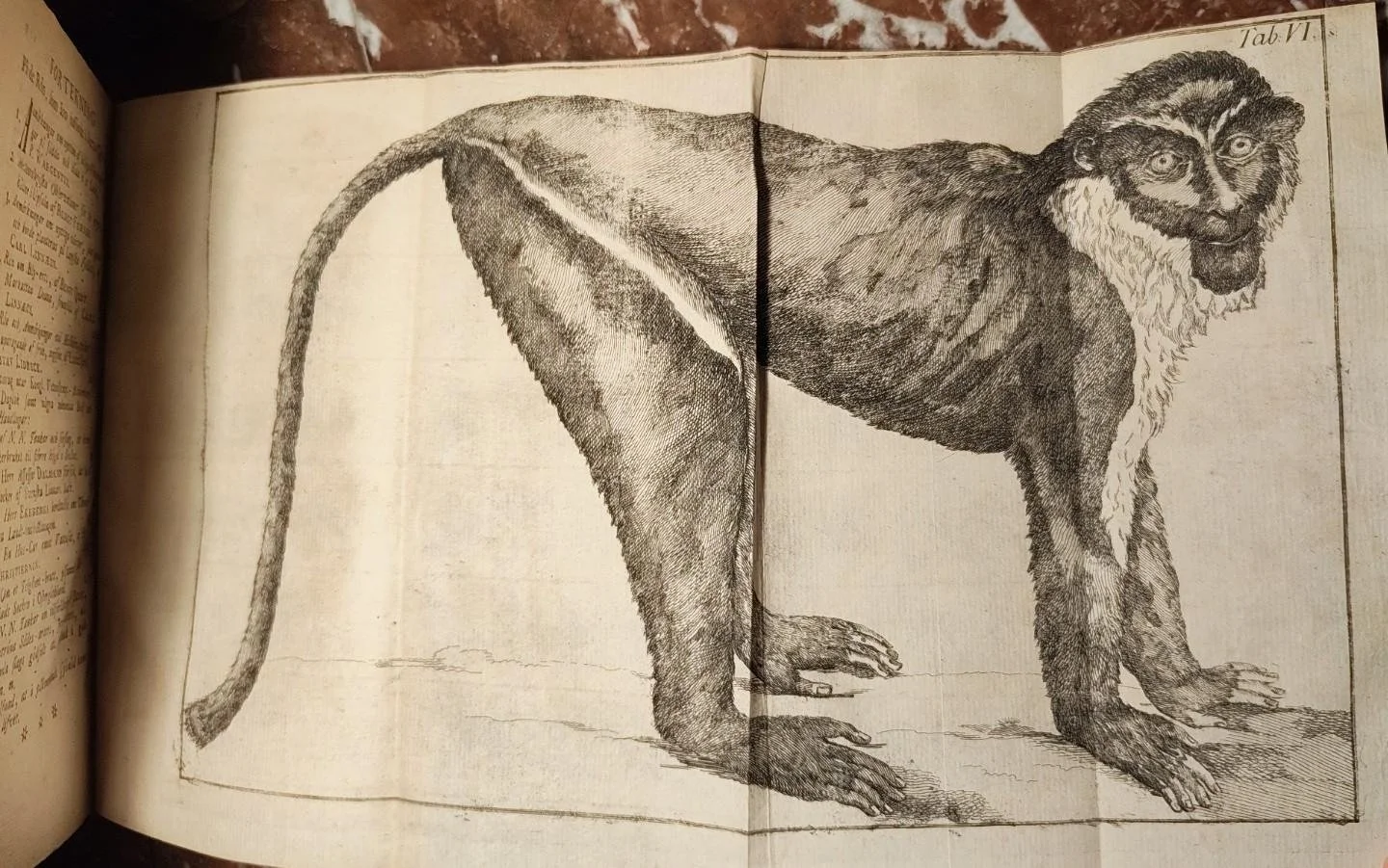 Image 1 of 10
Image 1 of 10

 Image 2 of 10
Image 2 of 10

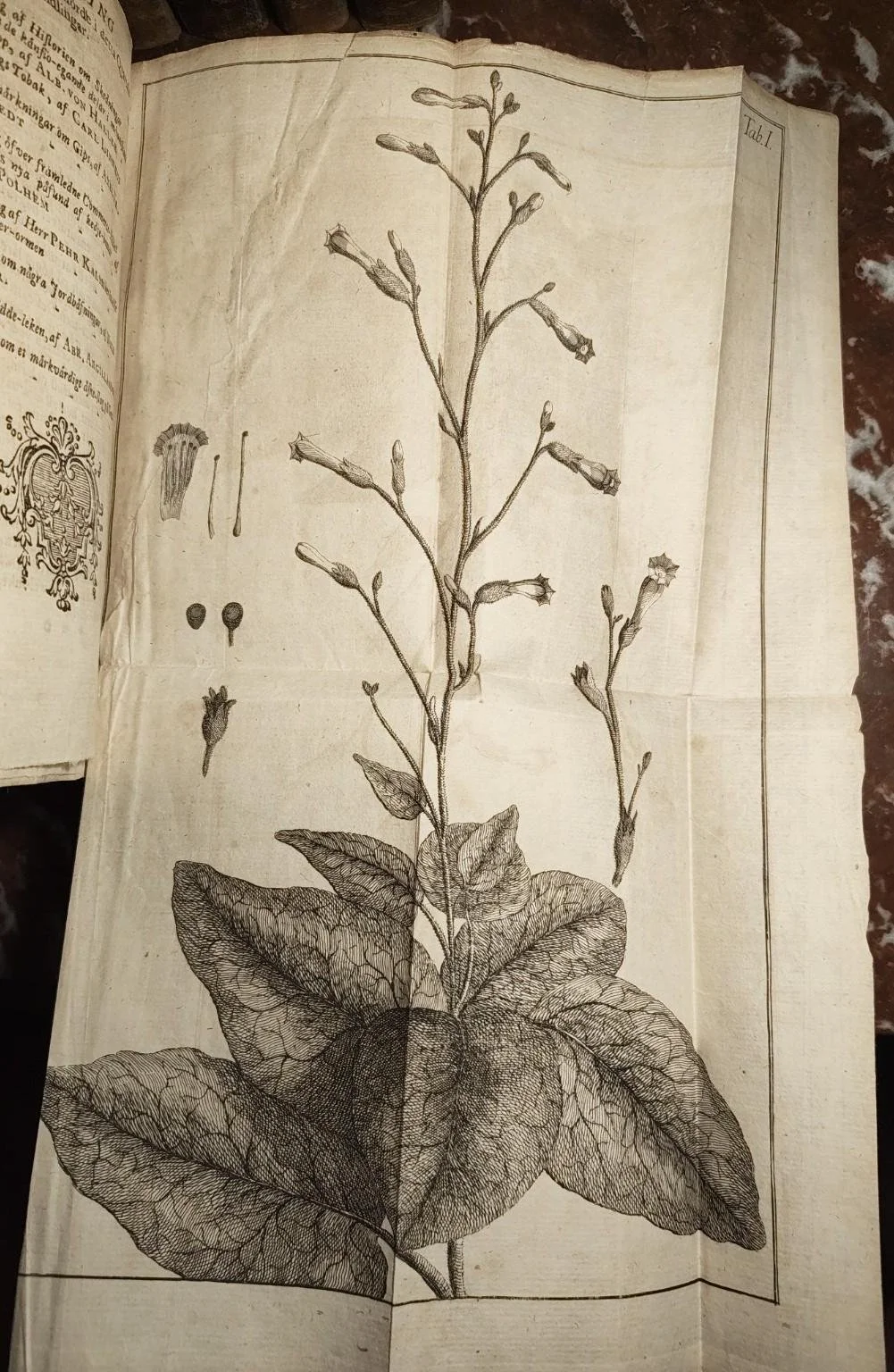 Image 3 of 10
Image 3 of 10

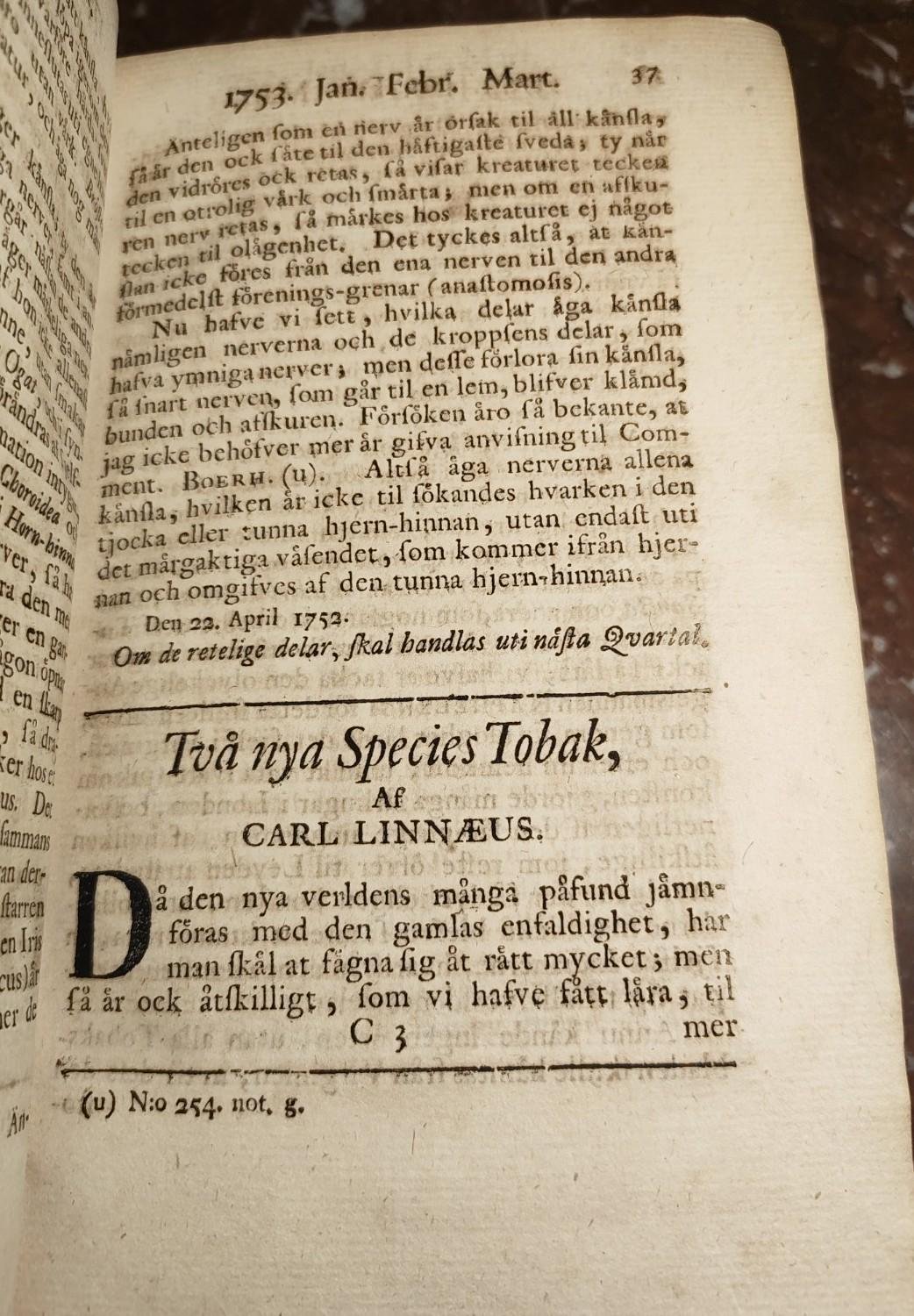 Image 4 of 10
Image 4 of 10

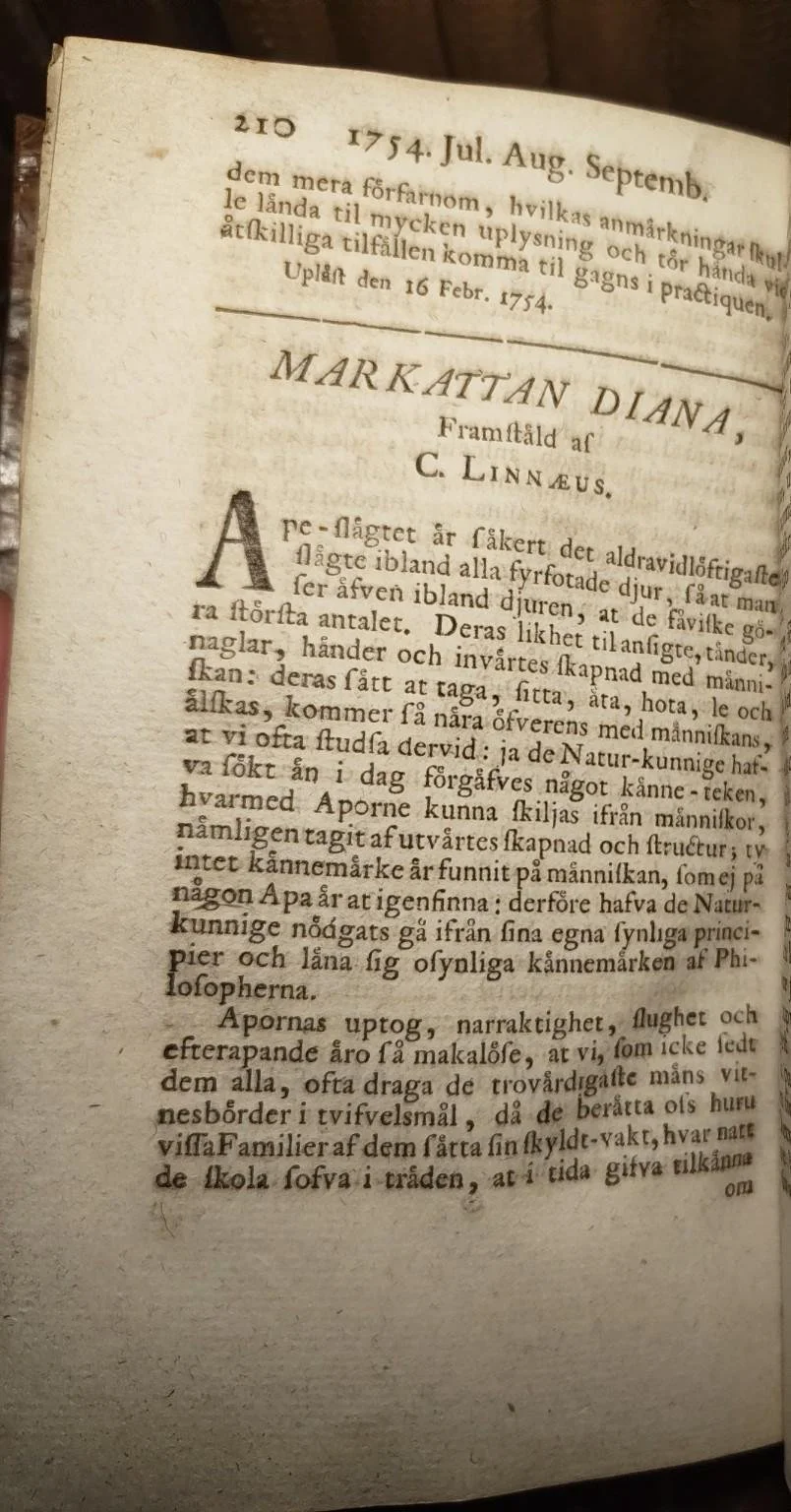 Image 5 of 10
Image 5 of 10

 Image 6 of 10
Image 6 of 10

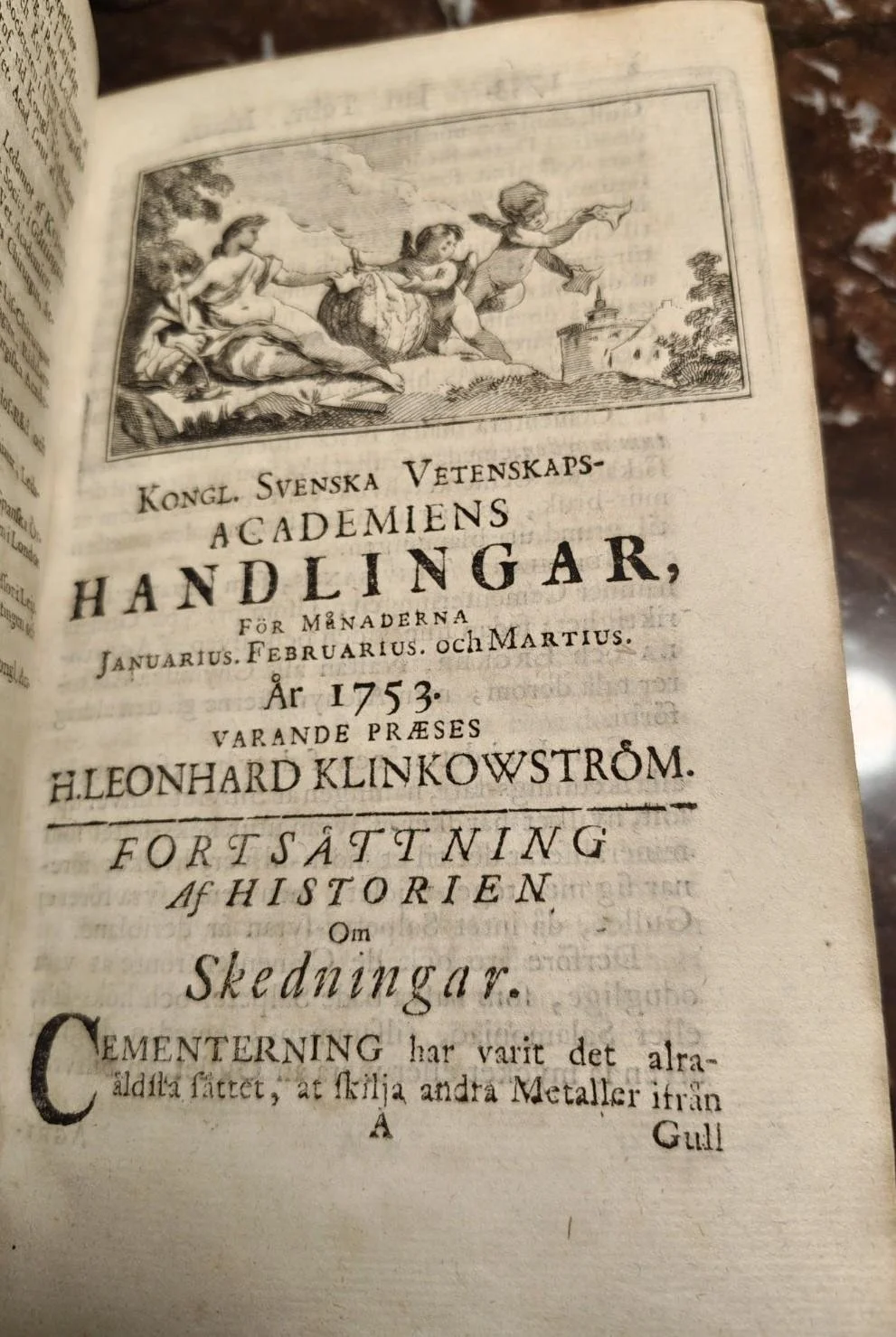 Image 7 of 10
Image 7 of 10

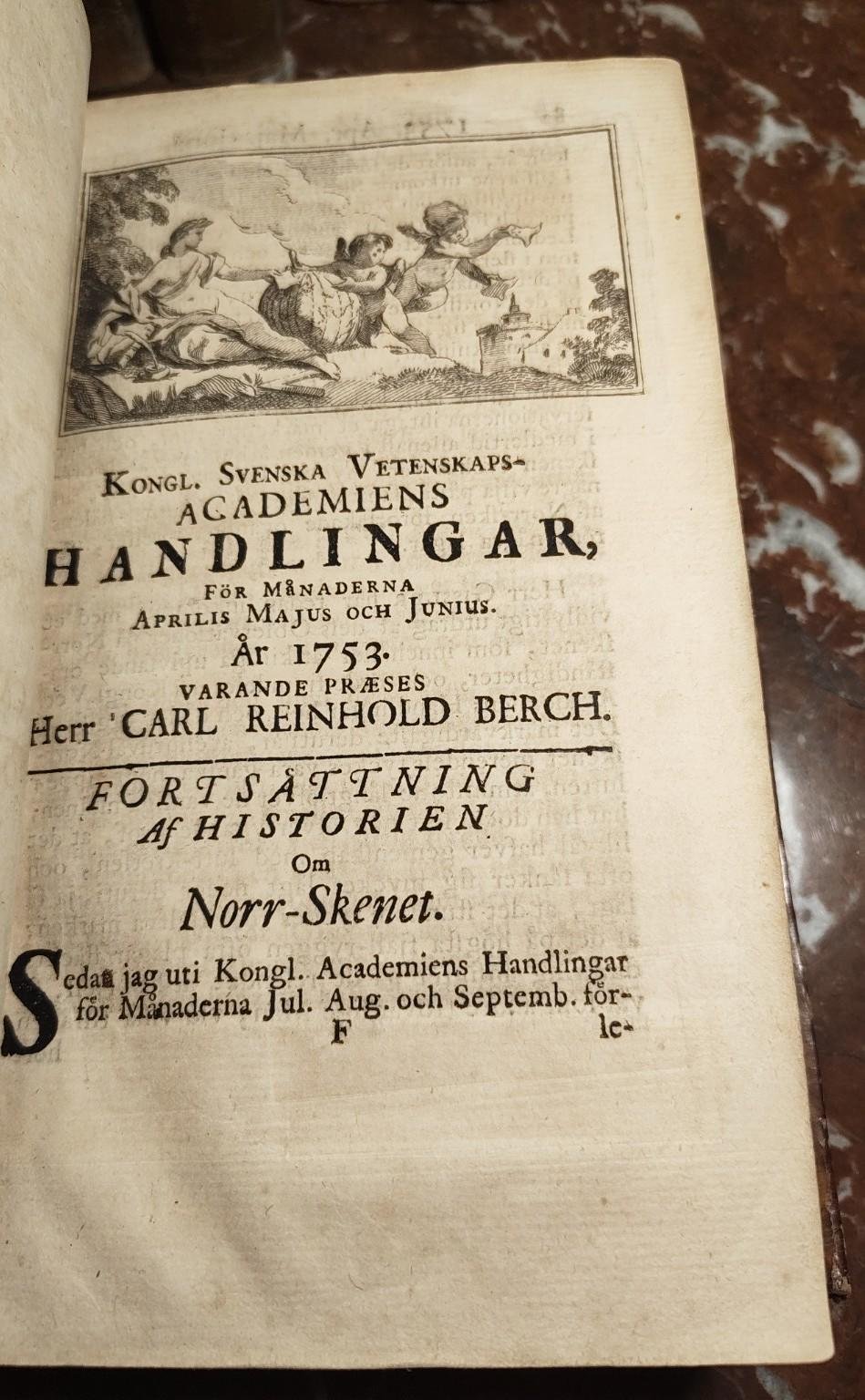 Image 8 of 10
Image 8 of 10

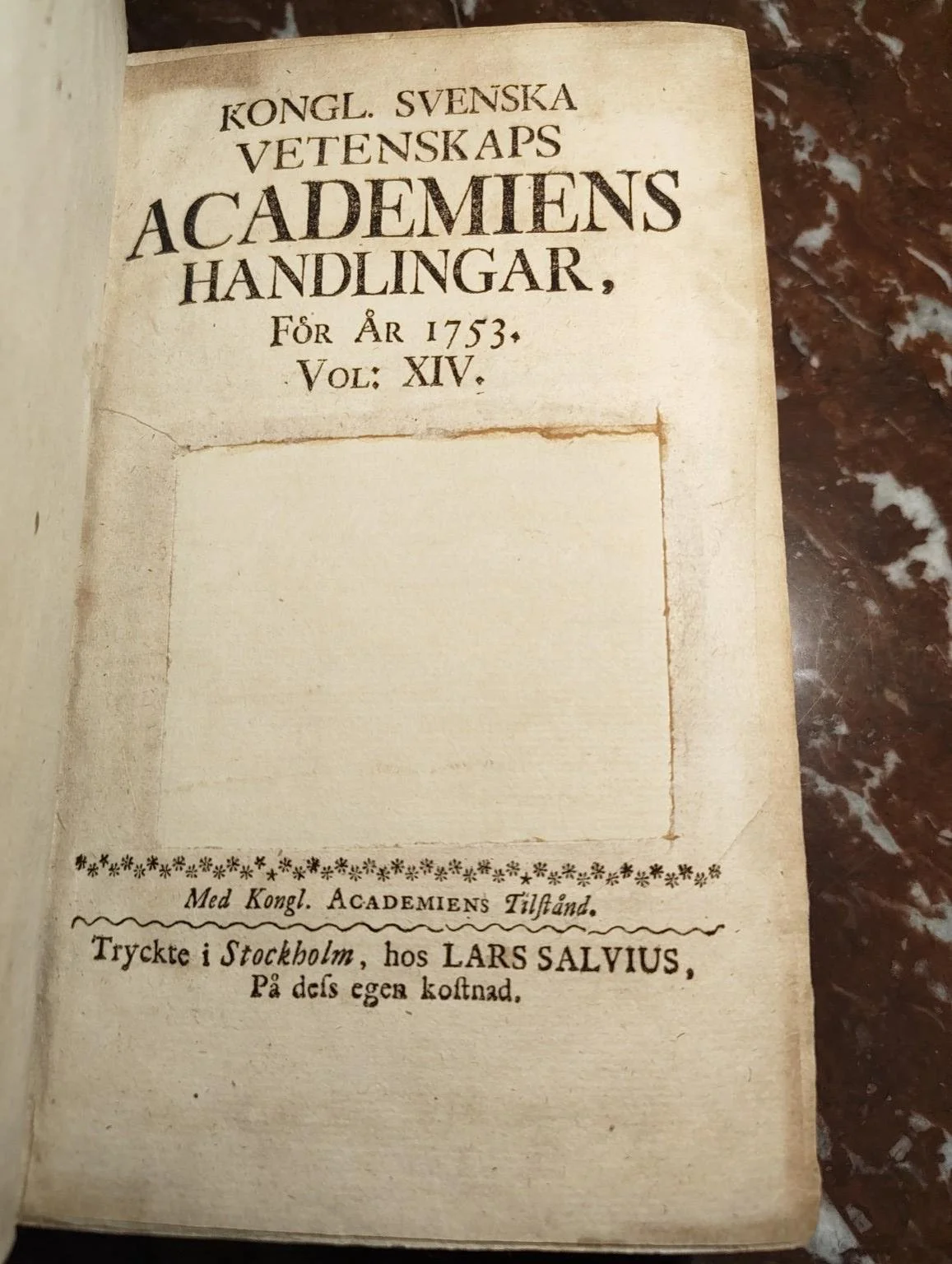 Image 9 of 10
Image 9 of 10

 Image 10 of 10
Image 10 of 10











Kongl. Svenska Vetenskaps-Academiens Handlingar. Volume XIV. Stockholm 1753–1754. With Linnaean Contributions and Folding Engravings
This substantial 1753–1754 volume of the Kongl. Svenska Vetenskaps-Academiens Handlingar, printed in Stockholm by Lars Salvius, offers a remarkable window into the scientific culture of the Swedish Enlightenment. As the fourteenth yearly volume of the Academy’s proceedings, it gathers an extraordinary range of natural historical research, botanical studies, zoological reports, and technical observations from one of Europe’s most active learned societies.
Linnaeus in print during the height of the Enlightenment
Among the most significant contents are two contributions by Carl Linnaeus (Carl von Linné), written at a moment when his taxonomic system was transforming the study of nature across Europe.
Included here are:
• Två nya species tobak (Two New Species of Tobacco, 1753)
• Markattan Diana (The Diana Monkey, 1754)
Both articles are accompanied by finely executed folding copperplate engravings that exemplify the Academy’s commitment to accurate scientific illustration. These plates are not merely decorative but formed an essential part of Linnaean scholarship, aiding the international circulation of his ideas.
A volume rich with engraved science
Beyond the Linnaean papers, the volume preserves numerous additional folding plates documenting botanical structures, zoological subjects, insects, anatomical observations, and experimental apparatus. These engravings represent the collaborative scientific work of mid eighteenth century Sweden, a period that placed the Royal Academy among the foremost scientific institutions of Europe.
Binding and condition
Bound in contemporary full leather with gilt spine decoration and raised bands, the volume shows the wear expected of a working eighteenth century scientific book. The hinges display cracks, the corners are rubbed, and the surface bears marks of handling. Internally the text remains clean with strong impressions throughout, and the engraved plates are present and well preserved.
Why this volume matters
This is an early and significant compilation of Swedish Enlightenment science, distinguished by the presence of original Linnaean papers and their plates. Complete volumes of the Handlingar from this period, especially with the folding engravings intact, are increasingly uncommon in private hands.
For collectors of Linnaeus, natural history, scientific illustration, or Scandinavian Enlightenment printing, this volume stands as a particularly meaningful acquisition.
This substantial 1753–1754 volume of the Kongl. Svenska Vetenskaps-Academiens Handlingar, printed in Stockholm by Lars Salvius, offers a remarkable window into the scientific culture of the Swedish Enlightenment. As the fourteenth yearly volume of the Academy’s proceedings, it gathers an extraordinary range of natural historical research, botanical studies, zoological reports, and technical observations from one of Europe’s most active learned societies.
Linnaeus in print during the height of the Enlightenment
Among the most significant contents are two contributions by Carl Linnaeus (Carl von Linné), written at a moment when his taxonomic system was transforming the study of nature across Europe.
Included here are:
• Två nya species tobak (Two New Species of Tobacco, 1753)
• Markattan Diana (The Diana Monkey, 1754)
Both articles are accompanied by finely executed folding copperplate engravings that exemplify the Academy’s commitment to accurate scientific illustration. These plates are not merely decorative but formed an essential part of Linnaean scholarship, aiding the international circulation of his ideas.
A volume rich with engraved science
Beyond the Linnaean papers, the volume preserves numerous additional folding plates documenting botanical structures, zoological subjects, insects, anatomical observations, and experimental apparatus. These engravings represent the collaborative scientific work of mid eighteenth century Sweden, a period that placed the Royal Academy among the foremost scientific institutions of Europe.
Binding and condition
Bound in contemporary full leather with gilt spine decoration and raised bands, the volume shows the wear expected of a working eighteenth century scientific book. The hinges display cracks, the corners are rubbed, and the surface bears marks of handling. Internally the text remains clean with strong impressions throughout, and the engraved plates are present and well preserved.
Why this volume matters
This is an early and significant compilation of Swedish Enlightenment science, distinguished by the presence of original Linnaean papers and their plates. Complete volumes of the Handlingar from this period, especially with the folding engravings intact, are increasingly uncommon in private hands.
For collectors of Linnaeus, natural history, scientific illustration, or Scandinavian Enlightenment printing, this volume stands as a particularly meaningful acquisition.

